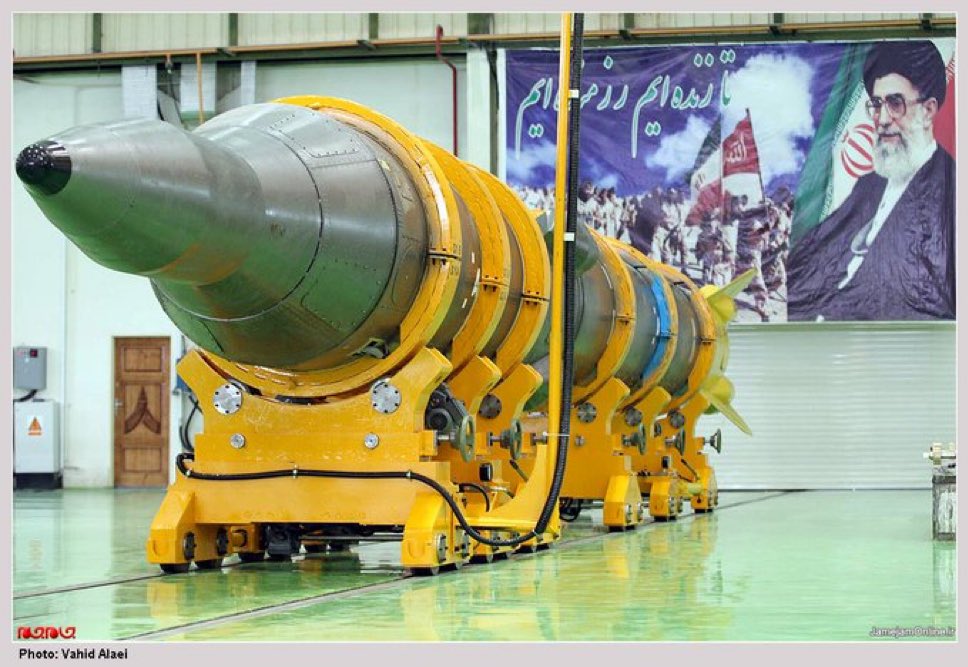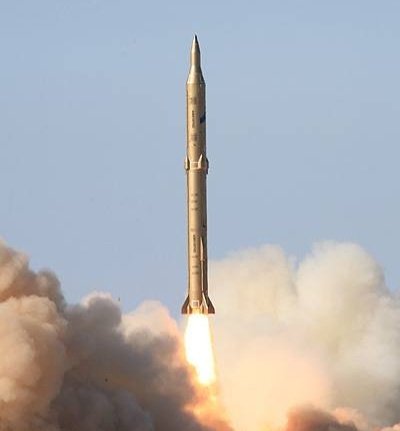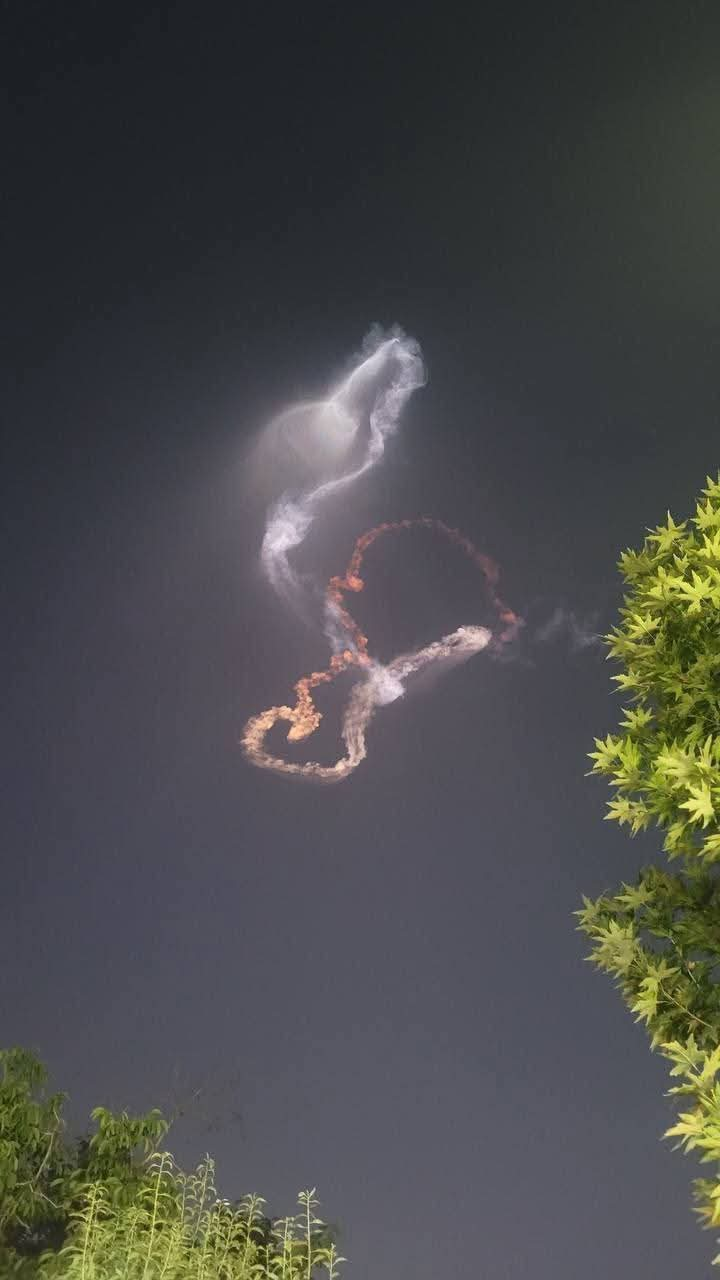[VIDEO] First Operational Use of Sejjil Missile by Iran Against Israel Signals Strategic Escalation
The IRGC officially confirmed that this marked the inaugural combat deployment of the Sejjil medium-range ballistic missile (MRBM), describing it as a calibrated response under "Operation True Promise 3"—a broader offensive that included missile and drone saturation attacks against key Israeli defence and intelligence facilities.
[DEFENCE SECURITY ASIA] — In a landmark escalation that redefines the strategic contours of missile warfare in the Middle East, Iran’s Islamic Revolutionary Guard Corps (IRGC) has for the first time launched its most advanced ballistic missile, the solid-fuel, two-stage Sejjil, in a direct strike against Israeli territory.
The IRGC officially confirmed that this marked the inaugural combat deployment of the Sejjil medium-range ballistic missile (MRBM), describing it as a calibrated response under “Operation True Promise 3″—a broader offensive that included missile and drone saturation attacks against key Israeli defence and intelligence facilities.
The introduction of the Sejjil in active warfare is being hailed by Iranian military analysts as a transformational shift in Tehran’s doctrine—from deterrence by demonstration to precision strategic retaliation using next-generation solid-fuel platforms.
Military analysts argue that the Sejjil’s use “represents a significant escalation in Iran’s military operations against Israel,” fundamentally altering the threat matrix for Israel and its regional allies.
The Sejjil missile, approximately 18 meters in length and weighing between 22 and 24 tonnes, is designed for rapid mobility and launch flexibility, using solid-propellant technology that removes the need for prolonged fueling on-site—making pre-emptive detection far more difficult for enemy ISR platforms.
With a maximum range of up to 2,500 kilometers, the Sejjil places not only all of Israel within striking distance from Iran’s territory, but also extends its reach to NATO-aligned installations in Cyprus, parts of southern Europe, and U.S. military bases in the Arabian Peninsula.
Capable of carrying a high-explosive or potentially unconventional warhead weighing up to 650 kilograms, the missile integrates GPS and inertial navigation systems, offering a circular error probable (CEP) estimated at under 100 meters—making it a precision-strike asset against high-value strategic targets.
Video Player
00:00
00:00
The IRGC confirmed that the Sejjil was launched from deep inside Iranian territory, allowing the strike to originate beyond the reach of most Israeli Air Force operations, which have thus far concentrated on western Iranian airbases and missile sites during the ongoing “Operation Rising Lion.”
This geographic depth, combined with solid-fuel readiness, gives Iran the ability to deliver counterforce or countervalue strikes without compromising launch survivability—a capability previously limited to nuclear-armed states.
Iranian state broadcaster Press TV claimed that the missile hit several designated military targets, including Mossad-operated facilities and advanced Israeli air defence installations—although visual verification remains inconclusive.
While the Israeli Defence Forces (IDF) reported that the majority of incoming ballistic threats were intercepted by Arrow-3 and David’s Sling systems, military sources acknowledged that “at least one Sejjil missile reached its intended target zone,” causing light structural damage in central Israel.
This partial success highlights both the evolving sophistication of Iranian missile technology and the growing challenge facing Israel’s multi-layered air defence architecture, which is increasingly being stretched by the sheer volume and complexity of incoming threats.
The use of a solid-fuel MRBM in live combat represents a monumental moment for Iranian defence planners and missile engineers, validating years of domestic R&D aimed at removing the logistical limitations inherent in older liquid-fueled designs such as the Shahab series.

More critically, the operationalisation of the Sejjil reduces Iran’s dependence on fixed launch infrastructure, introducing greater survivability and battlefield utility in a potential full-scale regional conflict involving multiple launch zones and mobile batteries.
According to Western intelligence officials, the deployment of the Sejjil now introduces a mobile, rapidly-launchable system into Iran’s strategic arsenal that complicates not only Israel’s pre-emptive doctrines but also U.S. and Gulf-state calculations regarding missile defence and early-warning architecture.
By integrating advanced avionics and possible terminal-phase maneuverability or decoys, the Sejjil is believed to have been engineered to exploit potential vulnerabilities in mid-course and exo-atmospheric interception systems—placing additional burden on regional missile shields such as THAAD, Arrow, and the nascent European Sky Shield Initiative.
While Iran continues to maintain that its missile programme is defensive in nature and not intended for nuclear warhead delivery, the Sejjil’s range, payload, and trajectory profile have triggered renewed scrutiny in Tel Aviv, Washington, and Brussels regarding the missile’s theoretical compatibility with nuclear warhead miniaturisation.
In comparative terms, the Sejjil joins a growing club of mobile, solid-fuel, medium-range missiles fielded by regional powers—including India’s Agni-II, Pakistan’s Shaheen-II, and North Korea’s Pukguksong-2—all of which serve as cornerstone assets in strategic deterrence and potential second-strike capabilities.
However, unlike its counterparts in South and East Asia, the Sejjil has now crossed the Rubicon of operational use—making it the only MRBM of its class to be deployed in a real-world high-intensity conflict, a fact not lost on Western defence establishments.

The United States swiftly condemned the launch, describing it as “a flagrant breach of regional stability and a calculated escalation in strategic missile confrontation.”
European Union spokespersons warned that Iran’s battlefield use of advanced MRBMs risks triggering a vertical arms race in missile technology, with potential cascading effects in Syria, Lebanon, and the Gulf.
Meanwhile, regional actors aligned with Tehran, including Hezbollah and select factions in Iraq and Yemen, praised the missile strike as a demonstration of the “new strategic era of the Islamic resistance”—raising the possibility of Sejjil proliferation to allied non-state actors in the future.
Russia and China, both key strategic partners of Iran in the Shanghai Cooperation Organisation (SCO), have notably refrained from publicly commenting—reflecting either tacit endorsement or strategic ambiguity as their interests span both sides of the confrontation line.
For Israel, the Sejjil’s combat debut reinforces an urgent need to upgrade missile defence infrastructure, with speculation intensifying over the fast-tracking of the Arrow-4 programme and the potential deployment of laser-based directed energy systems for boost-phase interception.
At the geopolitical level, this strike sets a precedent that could reverberate well beyond the Levant, potentially influencing doctrinal shifts in Europe, Asia, and even the Indo-Pacific, where solid-fuel missile proliferation and hypersonic glide vehicle development are rapidly evolving in parallel.

Iran’s launch of the Sejjil ballistic missile in combat is a clear signal that the Islamic Republic is now prepared to translate its deterrent rhetoric into operational reality—blurring the lines between threat demonstration and decisive retaliation.
This moment may well mark the beginning of a new missile warfare doctrine in the Middle East, where solid-fuel MRBMs, mobile platforms, and precision strikes converge to redraw the region’s military landscape.
As both sides intensify preparations for further escalations, and missile arsenals continue to evolve, one thing is abundantly clear: the age of symbolic launches is over—the era of live-fire strategic missile confrontations has begun.
— DEFENCE SECURITY ASIA

